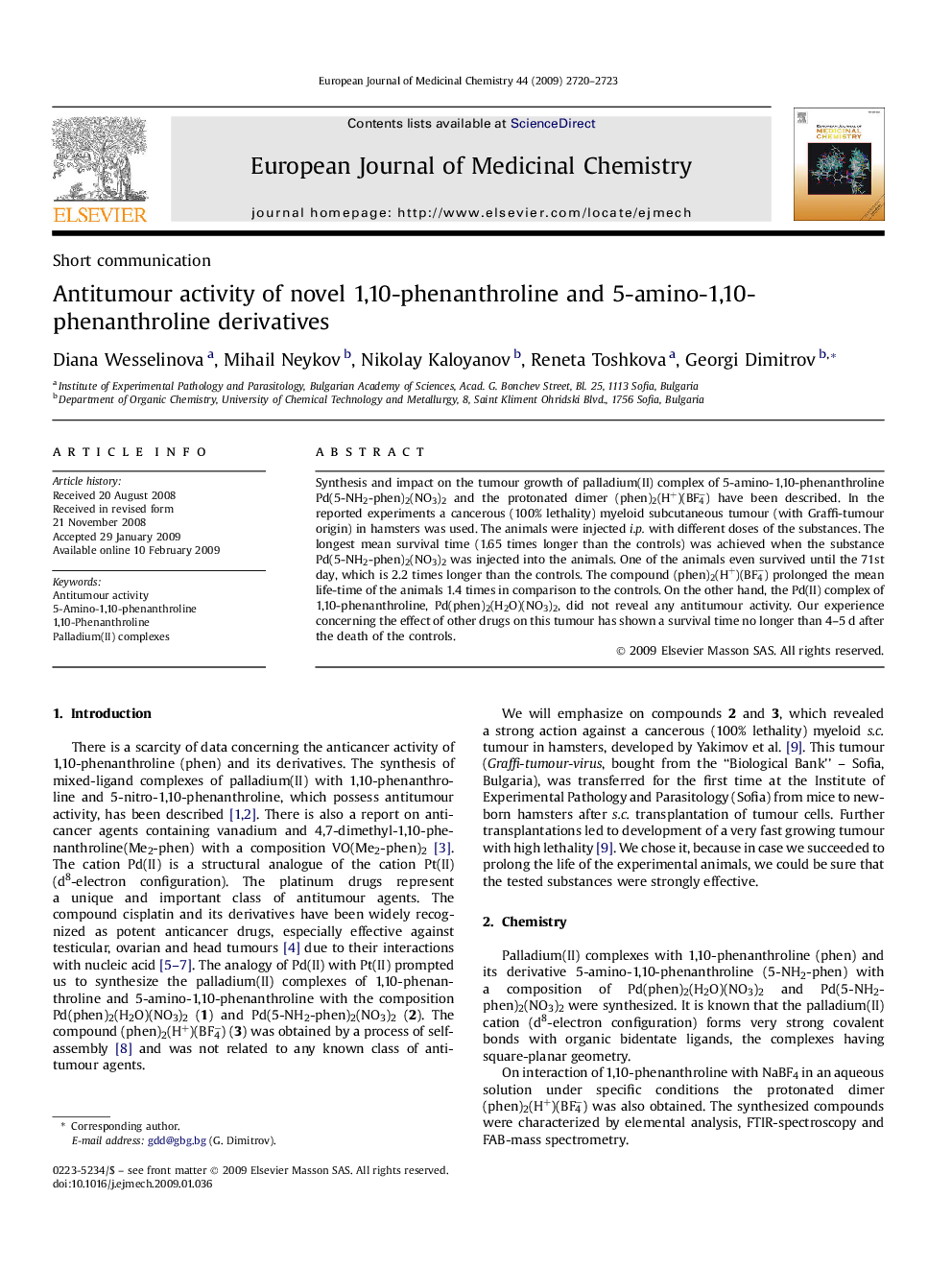| Article ID | Journal | Published Year | Pages | File Type |
|---|---|---|---|---|
| 1395078 | European Journal of Medicinal Chemistry | 2009 | 4 Pages |
Synthesis and impact on the tumour growth of palladium(II) complex of 5-amino-1,10-phenanthroline Pd(5-NH2-phen)2(NO3)2 and the protonated dimer (phen)2(H+)(BF4−) have been described. In the reported experiments a cancerous (100% lethality) myeloid subcutaneous tumour (with Graffi-tumour origin) in hamsters was used. The animals were injected i.p. with different doses of the substances. The longest mean survival time (1.65 times longer than the controls) was achieved when the substance Pd(5-NH2-phen)2(NO3)2 was injected into the animals. One of the animals even survived until the 71st day, which is 2.2 times longer than the controls. The compound (phen)2(H+)(BF4−) prolonged the mean life-time of the animals 1.4 times in comparison to the controls. On the other hand, the Pd(II) complex of 1,10-phenanthroline, Pd(phen)2(H2O)(NO3)2, did not reveal any antitumour activity. Our experience concerning the effect of other drugs on this tumour has shown a survival time no longer than 4–5 d after the death of the controls.
Graphical abstractPalladium(II) complexes of 1,10-phenanthroline (phen) and 5-amino-1,10-phenanthroline (5-NH2-phen) – Pd(phen)2(H2O)(NO3)2 and Pd(5-NH2-phen)2(NO3)2 were synthesized. A protonated dimer (phen)2(H+)(BF4−) was also obtained. The last two compounds show good activities against a cancerous (100% lethality) myeloid s.c. tumour in hamsters.Figure optionsDownload full-size imageDownload as PowerPoint slide
